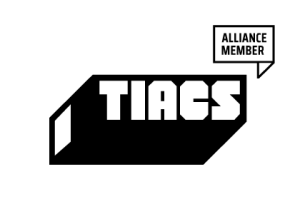The Great Resignation
The so-called ‘Great Resignation’ was one of the top stories to come out of the pandemic. As COVID-19 surged across the world, workers from a wide array of industries quit their jobs at historic rates.
But what’s driving this mass exodus of workers? And what implications does it have on your career?
The Great Resignation explained

The term was first used in 2021 by Anthony Klotz, an organisational psychologist and professor at Texas A&M University, to describe the wave of workers in the United States who were quitting their jobs as a result of the pandemic. This phenomenon was unprecedented; in August 2021, 4.3 million Americans quit their jobs, and a few months later in November, another 4.5 million workers quit.
It’s not just North America that’s seeing a shift in their workforce. In Australia, a similar story is unfolding. In a recent report done by PwC, 1,800 Australian workers were surveyed and researchers found that 38% of those workers were looking at leaving their current employer some time in the next 12 months.
Anthony Klotz attributes these high levels of turnover to the psychological shifts that have occurred as a result of the ongoing COVID-19 crisis. Lockdowns provided unique opportunities for employees to reevaluate their work-life balance and to reflect on their own career trajectory. The rise of hybrid and remote working arrangements also allowed people to imagine the possibility of a career that gave them the freedom and flexibility to work on their own terms and on their own time.
Although turnover rates are expected to stabilise in 2022, it seems likely that there will still be a high level of movement across the global workforce. In a recent survey done by Microsoft, it was reported that over 40 per cent of the global workforce was considering leaving their workplace in 2022. It’s clear, then, that the search for fulfilling, meaningful work will be a continuing trend for years to come, way beyond the pandemic.
Who’s driving The Great Resignation?

2021’s mass exodus of workers could be felt across a wide range of industries, but movement was at its highest amongst mid-career employees and employees in the tech and healthcare industries. Many workers in these segments have found themselves exhausted and burned out after working too long and too hard in rigid and inflexible environments, leading them to look elsewhere for more fulfilling opportunities.
The search for better pay, for better working conditions, and for more meaningful work are just some of the key driving forces behind The Great Resignation. As Anthony Klotz says to CNBC, “It’s not just about getting another job, or leaving the workforce, it’s about taking control of your work and personal life, and making a big decision–resigning–to accomplish that”.
The pandemic forced many of us to think deeply about the role of work in our lives, and lockdowns fundamentally altered the relationships between employees and employers. The combination of these ‘mindset shifts’ has resulted in a world where workers are now choosing to exercise more agency over their professional lives.
The appeal of entrepreneurship in a post-pandemic world

If the pandemic taught us anything, it’s that nothing should be taken for granted. In 2020, we all saw first hand how quickly the world could be turned upside down and how rapidly our lives could change.
The realisation that life is too short to be sleeping on your passions has resulted in a tidal wave of entrepreneurial activity across the board. 2021 was marked by a small-business boom, which saw thousands of workers leave their jobs to launch their own businesses and to make their side-hustles their main priority.
For those yet to start their businesses, the good news is this: the pandemic has created fertile ground for new, small businesses to thrive and succeed. The shift to online learning, online shopping, online consumption, and online entertainment means that the opportunity for business growth is quite literally everywhere and completely borderless. In our new hybrid world, there are boundless resources and networks out there that can help individuals monetise their hobbies and skills into scalable and successful businesses.
At Jim’s Group, we’re passionate about empowering everyday people to launch their own businesses. Over the years, we’ve had thousands of individuals come to us after feeling dissatisfied with their jobs, burnt out from working in high pressure environments, and hungry for a change in their life. Many of our franchisees, in turn, have built highly successful businesses that have completely exceeded their initial expectations.
Hear from one of our Jim’s Mowing franchisees, Dan Cahill, as he shares his experience in building and scaling his small business.
If you’ve been thinking of starting your own business this year, but want the support of an existing national brand behind you, get in touch with us today to discuss how you can become a Jim’s franchise owner in 2022.
Related Jim’s Group News
– How Do You Become a Master Franchise?
– How to Promote Your Business in Your Local Community?
– What are the Conditions of a Franchise Agreement?
– What are the Pros of Owning a Franchise?
– What is a Franchise?
– What is Franchise Economics?





